9.0 Getting Ready to Take On Japan (2)
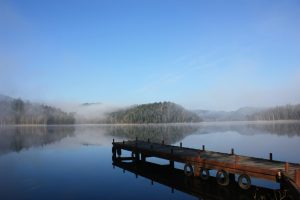
 Learning goals
Learning goals
By the end of this chapter, you will be able to:
- Recognise and read key kanji:
- Objects & nature: 本 (book/basis), 山 (mountain), 川 (river), 田 (field)
- People: 人 (person), 私 (I/private).
- Use demonstrative adjectives and pronouns effectively:
- この/その/あの/どの + noun (this/that/that over there/which)
- ここ/そこ/あそこ/どこ (here/there/over there/where)
- 誰の (whose + noun).
- Express desires with たいです (tai desu).
- Navigate Japanese currency (円: えん) for shopping.
- Explore cultural connections between the Ainu people of Japan and Aboriginal and Torres Strait Islander peoples of Australia.
 Why these skills matter
Why these skills matter
Cognitive benefits:
- Strengthen reading fluency and meaning association by recognising kanji patterns
- Improve spatial awareness and interpretation of relationships by using この/その/あの and ここ/そこ/あそこ
- Sharpen mental calculations with larger number units when handling Japanese currency
- Broaden cultural understanding beyond dominant perspectives by comparing Indigenous worldviews
Real-life benefits:
- Read common kanji in everyday situations
- Navigate social interactions with precise demonstrative choices
- Shop and order food with cultural awareness
- Handle cash transactions smoothly
- Engage in meaningful discussions about Indigenous cultures in Japan and Australia
Words
| Japanese | Romaji | English | Notes |
|---|---|---|---|
| Ru-verbs |
|||
| 出(で)かける | dekakeru | to go out | Dictionary form. This verb is typically used with the particle に to indicate where one is going out to. |
| U-verbs | |||
| 歌(うた)う | utau | to sing | Dictionary form. This verb is typically used with the object particle を to indicate what is being sung. |
| 買(か)う | kau | to buy | Dictionary form. This verb is typically used with the object particle を to indicate what is being bought. |
| 要(い)る | iru | to need | Dictionary form. This verb is typically used with the subject particle が in affirmative sentences, as in ペンが要ります (pen ga iri masu: I need a pen). However, it is often used with the particle は in negative and question sentences to emphasise the topic. |
| Irregular verbs | |||
| 電話(でんわ)する | denwa suru | to make a phone call | Dictionary form. This verb is typically used with the particle に to indicate who is being called. |
| Nouns |
|||
| ウポポイ(うぽぽい) |
upopoi | upopoy | This term means ‘singing together’ in the Ainu language, reflecting the Ainu culture’s deep connection to music and communal traditions. |
| 民族 | minzoku | ethnic group or people | This term is often used to refer to cultural or ethnic groups within a population. |
| 博物館 | hakubutsu-kan | museum | 博物 (hakubutsu) means ‘natural history’ or ‘cultural artefacts’ and 館 (kan) means ‘building’ or ‘hall’. |
| 民俗博物館(みんぞくはくぶつかん) |
minzoku hakubutsu-kan | ethnographic museum | This refers to a museum focused on the culture and history of ethnic groups. |
| アイヌ(あいぬ) |
Ainu | Ainu (Indigenous people of Japan) | The Ainu are Indigenous people who live in Hokkaido and northern Honshu, Japan, as well as on Sakhalin Island, Russia. |
| 先住民(せんじゅうみん) | senjuu-min |
Indigenous people | |
| 言葉(ことば) |
kotoba |
word | |
| 意味(いみ) | imi |
meaning | |
| ホテル(ほてる) | hoteru | hotel | |
| ユースホステル(ゆうすほすてる) |
yuusu hosuteru | youth hostel | |
| Money-related nouns | For further details, see Module 9.6. | ||
| 円(えん) | en | yen | 円 is the official currency of Japan, pronounced en. |
| レシート(れしいと) | reshiito | receipt | レシート is an informal term that is generally used for personal records of purchases. |
| 領収書 (りょうしゅうしょ) | ryoushuu sho | an official receipt | This is an official receipt that can be requested from a store for business or tax purposes. It includes more formal details than a レシート, such as the purchaser’s name, possibly a stamp, and sometimes additional information to satisfy accounting or reimbursement requirements. |
| お支払(しはら)い | oshiharai | payment | Similar to お釣り, the prefix お in お支払い is an honorific prefix that adds politeness and respect. It is commonly used in formal or customer-service settings when referring to payments. |
| レジ(れじ) | reji | checkout counter or cash register | レジ is a shortened form of レジスター (rejisutaa). It is a loanword from English (register), but only refers to the checkout counter or cash register area in stores. |
| クレジットカード(くれじっとかあど) | kurejitto kaado | credit card | |
| キャッシュ(きゃっしゅ) | kyasshu | cash | This is a loanword from English (cash) and often used in casual contexts, such as in everyday conversation or the retail sector. キャッシュ can also imply a cash payment method rather than credit card or electronic payments. |
| 現金 | genkin | cash | 現金 is often used in formal or official contexts. For example, it might appear on legal documents or official forms, or when specifying payment methods, such as 現金払(げんきんばら)い, (genkin barai: cash payment). |
| Nature-related nouns | |||
| 山(やま) |
yama |
mountain | |
| 川(かわ) |
kawa | river | |
| 海(うみ) |
umi | ocean/sea | |
| 田(た) | ta | rice field | |
| Demonstrative adjectives and pronouns |
For further details, see Module 9.4 and Module 9.5. | ||
| この | kono | this (+noun) | |
| その |
sono | that (+noun) | |
| あの |
ano | that (+noun over there) | |
| どの |
dono | which (+noun) | |
| 誰(だれ)の | dareno | whose (+noun) | |
| ここ |
koko | here | |
| そこ |
soko | there | |
| あそこ |
asoko | over there | |
| どこ |
doko | where | |
Expressions and phrases
| Japanese | Romaji | English | Notes |
|---|---|---|---|
| どんな | donna | what kind of | どんな, unlike most other question words, attaches directly to nouns rather than standing alone. For example, ‘What kind of book do you like?’ is どんな本(ほん)が好(す)きですか. |
| いくら | ikura | how much | いくら is typically used in the ‘X は Y ですか’ sentence pattern to ask about the amount or price of something. |
| たくさん | takusan | a lot / many | In English, ‘a lot’ or ‘many’ is typically used as an adverb (I eat a lot) or adjective (I have many books). In Japanese, たくさん is primarily used as an adverb directly before a verb. For example, 本(ほん)をたくさん読(よ)みます。(Hon o takusan yomi masu: I read a lot of books.). However, it can also function as a noun when followed by the particle の (no) to directly modify another noun. For example, たくさんの本があります。(Takusan no hon ga ari masu: There are many books.) |
Key grammar points
| Japanese | Romaji | English | Notes |
|---|---|---|---|
| たい | tai |
want (to do) | Dictionary form. たい is an auxiliary verb. For further details, see Module 9.2. |
| たいです | tai desu |
want (to do) | Polite form. |
Kanji
| Money | 百 (hundred), 千 (thousand), 万 (ten thousand) and 円 (yen) |
|---|---|
| Everyday |
本 (book/basis), 人 (person), 山 (mountain), 川 (river), 田 (field) and 私 (I/private) |
NOTE: These kanji will be further explored in Module 9.1.
Exercise 1
 Model dialogue
Model dialogue
Continue the conversation from Module 8.0 with Lina, Nao, Ren and Kevin as they discuss their exciting winter plans and explore fascinating destinations. Their lively discussion covers everything from travel itineraries to unique cultural experiences at a special museum. Join them to find out where their semester break will take them and what makes these places so intriguing. Don’t miss this engaging dialogue – it might just spark some inspiration for your own travel adventures!
| Kevin: 北海道(ほっかいどう)ですか。楽(たの)しみですね! | Hokkaidou desu ka. Tanoshimi desu ne! |
| Nao: 六月(ろくがつ)の北海道はいいですよね。北海道大学(ほっかいどうだいがく)に友達(ともだち)がいますから、いつか私(わたし)も行(い)きたいです。 | Rokugatsu no Hokkaidou wa ii desu yo ne. Hokkaidou Daigaku ni tomodachi ga i masu kara, itsuka watashi mo iki tai desu. |
| Ren: 北海道大学は札幌(さっぽろ)にありますよね。 | Hokkaidou Daigaku wa Sapporo ni ari masu yo ne. |
| Nao: はい、そうです。リナ(りな)さんは北海道でどこに行きますか。 | Hai, sou desu. Rina-san wa Hokkaidou de doko ni iki masu ka? |
| Lina: 私は札幌と小樽(おたる)と白老町(しらおいちょう)に行きます。 | Watashi wa Sapporo to Otaru to Shiraoi-chou ni iki masu. |
| Kevin: 白老町? | Shiraoi-chou? |
| Lina: はい。そこにウポポイ(うぽぽい)があります。
NOTE: The term ウポポイ (Upopoi: Upopoy) can also refer to the 民族共生象徴空間 (みんぞくきょうせいしょうちょうくうかん: Minzoku Kyousei Shouchou Kuukan: The Symbolic Space of Ethnic Harmony). This complex includes the Upopoy National Ainu Museum and Park, or 国立アイヌ民族博物館 (こくりつあいぬみんぞくはくぶつかん: Kokuritsu Ainu Minzoku Hakubutsu-kan), which showcases the culture and history of the Ainu people. |
Hai. Soko ni Upopoi ga ari masu. |
| Kevin: へえ。そこはどんな場所(ばしょ)ですか。 | Hee. Soko wa donna basho desu ka? |
| Lina: アイヌ(あいぬ)の人(ひと)たちの民俗博物館(みんぞくはくぶつかん)があります。ウポポイは、アイヌの人たちの言葉(ことば)です。意味(いみ)は「みんなで歌(うた)う」です。 | Ainu no hito-tachi no minzoku hakubutsu-kan ga ari masu. Upopoi wa, Ainu no hito-tachi no kotoba desu. Imi wa ‘minna de utau’ desu. |
| Kevin: … |
… |
| Ren: ケビン(けびん)さん、アイヌは日本の先住民(せんじゅうみん)ですよ。ところで、白老町ではどこに泊(と)まりますか。 | Kevin-san, Ainu wa Nihon no senjuu-min desu yo. Tokoro de, Shiraoi-chou de wa doko ni tomari masu ka. |
| Lina: ユースホステル(ゆうすほすてる)に泊まります。 | Yuusu hosuteru ni tomari masu. |
| Kevin: そこはいくらぐらいですか。 | Soko wa ikura gurai desu ka. |
| Rina: ええと、八千円(はっせんえん)ぐらいです。 | Eeto, hassen-en gurai desu. |
| Nao: 北海道には山(やま)も川(かわ)もたくさんありますよ。それから、おいしい食(た)べ物(もの)もたくさんありますよね。
NOTE: We will learn how to use adjectives, such as おいしい (oishii: delicious), in detail in Module 11.2. Additionally, the particle には is a combination of に (which marks a place, time or target) and は (the topic marker). It is used when you want to highlight or emphasise a specific location, time or target in a sentence. In this context, it is used to emphasises that in Hokkaido in particular, there are many mountains and rivers (perhaps more than in other places or as a notable feature of Hokkaido). |
Hokkaidou ni wa yama mo kawa mo takusan ari masu yo. Sorekara, oishii tabemono mo takusan ari masu yo ne. |
| Ken: 僕(ぼく)は札幌ラーメンが大好(だいす)きです。 | Boku wa Sapporo raamen ga daisuki desu. |
| Lina: 私も好きです!おいしいですよね。 | Watashi mo suki desu! Oishii desu yo ne. |
| Kevin: へえ。僕も北海道に行きたいです! | Hee. Boku mo Hokkaidou ni iki tai desu! |
English translation
| Kevin: So (you’re going to) Hokkaido, right? That sounds exciting! |
| Nao: Hokkaido in June is great, isn’t it? Because I have a friend at Hokkaido University, I would like to visit there sometime as well. |
| Ren: Hokkaido University is in Sapporo, right? |
| Nao: Yes, that’s right. Lina, where are you going in Hokkaido? |
| Lina: I’m going to Sapporo, Otaru and Shiraoi Town. |
| Kevin: Shiraoi Town? |
| Lina: Yes. The Upopoy is there. |
| Kevin: I see. What kind of place is that? |
| Lina: It’s a folklore museum dedicated to the Ainu people. Upopoy is an Ainu word. It means ‘singing together’. |
| Kevin: … |
| Ren: Kevin, the Ainu are the Indigenous people of Japan. By the way, where will you stay in Shiraoi Town? |
| Lina: I’ll stay at a youth hostel. |
| Kevin: How much is it there? |
| Lina: Well, it’s about 8,000 yen. |
| Nao: There are many mountains and rivers in Hokkaido, you know. And there’s also a lot of good food, right? |
| Ken: I love Sapporo ramen. |
| Ren: I like it, too! It’s good isn’t it? |
| Kevin: Wow. I want to go to Hokkaido, too! |
Exercise 2
Listen to the following audio files and repeat each Japanese phrase after the recording. Each phrase is read twice, first at a slow pace and then at a natural pace.
Kevin: 北海道(ほっかいどう)ですか。楽(たの)しみですね!
Nao: 六月(ろくがつ)の北海道はいいですよね。北海道大学(ほっかいどうだいがく)に友達(ともだち)がいますから、いつか私(わたし)も行(い)きたいです。
Ren: 北海道大学は札幌(さっぽろ)にありますよね。
Nao: はい、そうです。リナ(りな)さんは北海道でどこに行きますか。
Lina: 私は札幌と小樽(おたる)と白老町(しらおいちょう)に行きます。
Kevin: 白老町?
Lina:はい。そこにウポポイ(うぽぽい)があります。
Kevin: へえ。そこはどんな場所(ばしょ)ですか。
Lina: アイヌ(あいぬ)の人(ひと)たちの民族博物館(みんぞくはくぶつかん)があります。ウポポイは、アイヌの人たちの言葉(ことば)です。意味(いみ)は「みんなで歌(うた)う」です。
Ren: ケビン(けびん)さん、アイヌは日本の先住民(せんじゅうみん)ですよ。ところで、白老町ではどこに泊(と)まりますか。
Lina: ユースホステル(ゆうすほすてる)に泊まります。
Kevin: そこはいくらぐらいですか。
Lina: ええと、八千円(はっせんえん)ぐらいです。
Nao: 北海道には山(やま)も川(かわ)もたくさんありますよね。それから、おいしい食(た)べ物(もの)もありますよね。
Ken: 僕(ぼく)は札幌ラーメンが大好(だいす)きです。
Lina: 私も好きです!おいしいですよね。
Kevin: へえ。僕も北海道に行きたいです!
 Discussion points
Discussion points
Let’s reflect on the following points and share your observations and thoughts!
- Do you know anything about the Ainu people? Watch the first three videos below to learn more about their traditions and language.
- Discuss whether there are any distinctive Indigenous peoples and their cultures in your home country that you would like to talk about. Are there any similarities between these cultures and the Ainu people? The third video material could be particularly useful if you’re interested in discussing the connections between the Ainu and Aboriginal and Torres Strait Islander peoples.
Further resources
The photo gallery presents a collection of images taken at the Upopoy National Ainu Museum and Park, located near Shiraoi Station in Hokkaido, Japan. The author documented the site’s exhibits, architecture and cultural displays through photography. The gallery includes photos of Ainu artefacts and interactive spaces designed for cultural education. The images provide a visual record of the museum’s role in preserving and presenting Ainu heritage.
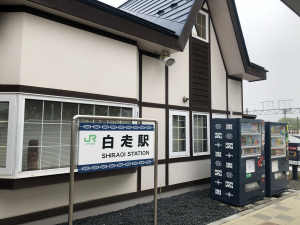 |
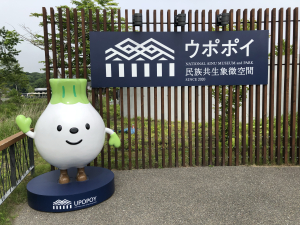 |
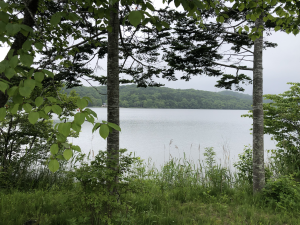 |
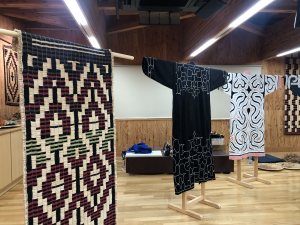 |
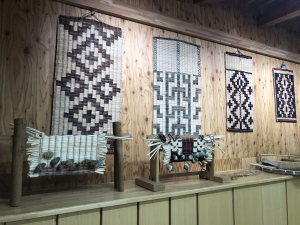 |
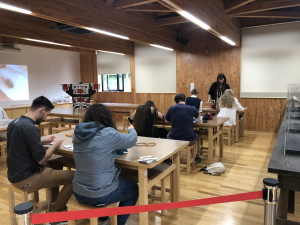 |
 |
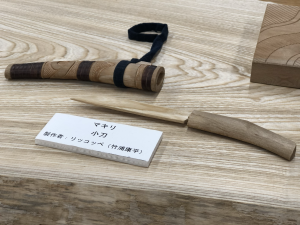 |
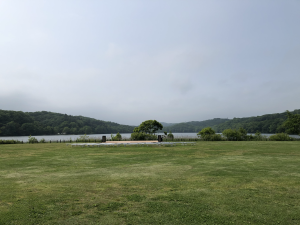 |
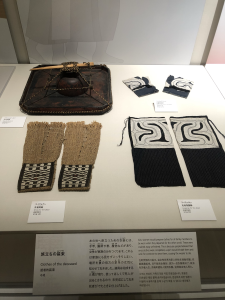 |
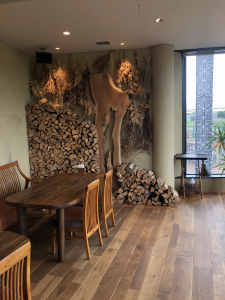 |
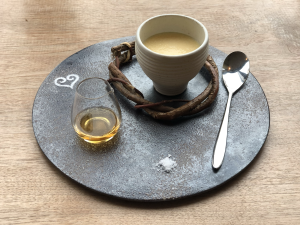 |
These introductory resources presented by Till Tomorrow Docu and the United Nations offer a brief overview of the Ainu people’s relationship with the spiritual or divine being ‘Kamuy’, and the history of the Ainu people to the present day, respectively:
For a more in-depth resource, this one-hour lecture by Dr Kathleen Olive on the Limelight Arts Travel YouTube channel offers a comprehensive perspective on Ainu culture and history, and how it has been studied and understood:
This video, created by Andrea Myers, explores the parallel assimilation processes that have impacted Indigenous peoples in both Australia and Japan. It delves into the shared challenges faced by the Aboriginal and Torres Strait Islander and Ainu peoples, highlighting the historical and ongoing effects of assimilation policies in both countries. This resource offers valuable insights into the common struggles and resilience of these Indigenous communities:
For a more in-depth critical discussion on the Upopoy National Ainu Museum and the potential shortcomings of the 2020 Tokyo Olympics in promoting Ainu culture and recognising their Indigenous rights, you may find Tessa Morris-Suzuki’s scholarly article Indigenous Rights and the ‘Harmony Olympics’ (2020) insightful.
Figures
1 “Hokkaido” by Koichi Tanaka. Pexels. Licensed under Pexels licence.
2 “Goal Icon” by faisalovers. Wikimedia Commons. Licensed under CC BY 3.0.
3 “Speech Bubble Icon” by Geremy Good. Wikimedia Commons. Licensed under CC0.
4 “Lightbulb Icon” by Maxim Kulikov. Wikimedia Commons. Licensed under CC BY 3.0.
References
Limelight Arts Travel. “The Ainu People, with Dr Kathleen Olive.” YouTube video, 1:07:49. July 9, 2024. https://www.youtube.com/watch?v=fKZOmRNarj8.
Morris-Suzuki, Tessa. “Indigenous Rights and the ‘Harmony Olympics.” Asia-Pacific Journal: Japan Focus 18, no. 4 (2020). https://apjjf.org/2020/4/morris-suzuki.
Myers, Andrea. “Ainu People of Japan and the Aboriginal People of Australia.” YouTube video, 11:36. Jun 21, 2019. https://www.youtube.com/watch?v=Yhzmd4Otb_k.
Till Tomorrow Docu. “Till Tomorrow—Ep. 2: Japan—Ainu.” YouTube video, 7:28. October 31, 2019. https://www.youtube.com/watch?v=g2PTpClNs7E.
United Nations. “AINU: Indigenous Peoples in Japan.” YouTube video, 5:10. July 25, 2017. https://www.youtube.com/watch?v=fKZOmRNarj8.

